Here are fascinating Thanksgiving Cactus Facts we bet you did not know! Read on to learn more about this festive plant in detail.
As the holiday season is around the corner, we’ve got all the interesting Thanksgiving cactus facts that make it special, which you can share with your family and friends at dinner!
Thanksgiving Cactus Facts
1. It Is Not a Christmas Cactus
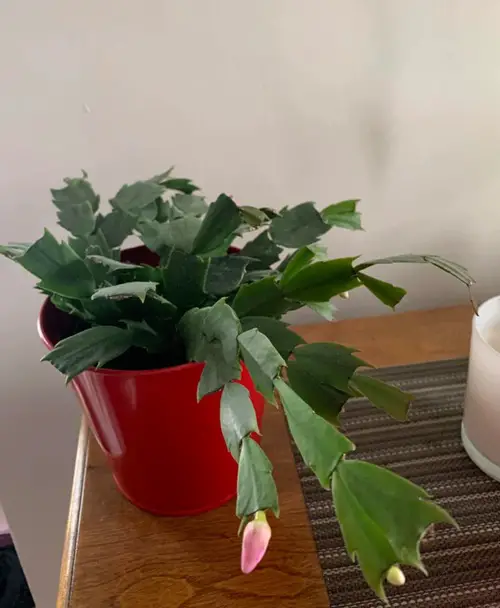
Many sellers and growers often confuse the Thanksgiving cactus with the Christmas cactus. However, the Thanksgiving cactus blooms about a month earlier and has serrated leaves with edges and flatter flowers than the Christmas cactus.
This plant also grows upright, which is different from the pendulous growth of the Christmas Cactus.
While the Thanksgiving cactus is distinct from the Christmas cactus, they are both members of the same genus–Schlumbergera.
2. Thanksgiving Cacti Are Epiphytes
This plant is an epiphyte, which means it grows on other plants and absorbs nutrients and moisture from the air.
Because of its aerial roots, it can survive at high altitudes on other plants without causing any harm. Pretty cool, huh?
3. It Loves Humidity

While most cacti prefer dry conditions, the Thanksgiving cactus is different. It needs a warm environment with high humidity for best growth and flowering.
A relative humidity level of 55-60% is necessary because low humidity will cause premature wilting and bud drops in Thanksgiving cacti. It can still tolerate levels as low as 40%, but the flowering would be impacted.
4. It Cannot Tolerate Direct Sunlight
Although it belongs to the cactus family, the Thanksgiving cactus cannot withstand direct sunlight for long periods, or its leaves will turn yellow.
You should keep it in a north- or east-facing window where it can get bright light. Just use curtains for a bit of shade with filtered light.
5. They Can Live for Decades!
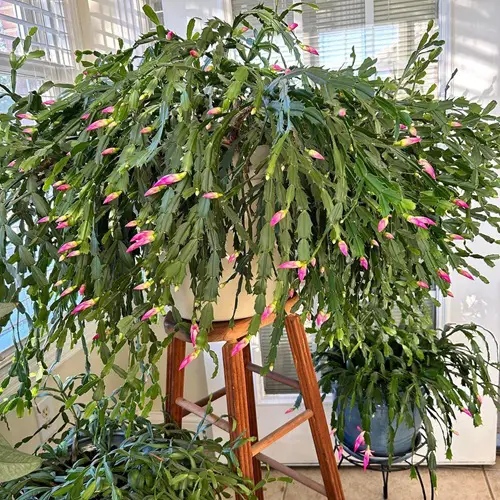
These plants are long-living succulents with an average lifespan between 20 to 30 years. Some Thanksgiving cacti have been known to live up to 100 years with optimal care.
If you grow one the right way, it can become a lovely, living family heirloom.
6. Thanksgiving Cactus is a Pet-friendly Plant
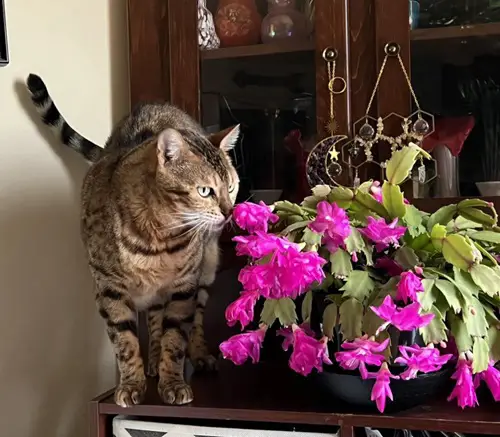
If you have pets at home, you know they can be curious about everything, including plants. Fortunately, according to the ASPCA (American Society for the Prevention of Cruelty to Animals), Schlumbergera species are non-toxic to cats and dogs, so you don’t need to worry.
7. Efficient Air Cleaner at Night
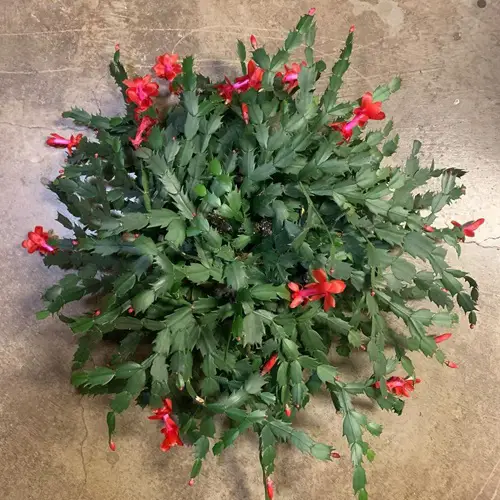
A lovely fact about the Thanksgiving cactus is that it purifies the air of harmful chemicals like benzene, formaldehyde, and toluene and improves your well-being, but you’ll have to grow a few for the benefits.
The plant absorbs harmful organic pollutants through its leaves and roots by phytoremediation and breaks them into simpler, nonharmful compounds.
8. Thanksgiving Cactus is a Short-Day Plant
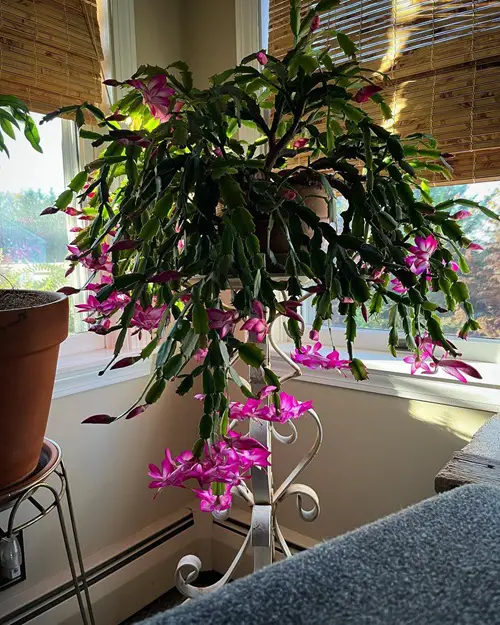
These cacti exhibit photoperiodism, which refers to the physiological response of plants to changing light and dark periods over a 24-hour duration.
Both Christmas and Thanksgiving cactus are short-day plants and flowers when days get shorter and nights get longer.
They typically bloom in late fall and winter when kept under 12 to 14 hours of darkness a few weeks prior. Don’t worry, though; cooler temperatures can encourage blooming even if the day length isn’t ideal.
9. Most Thanksgiving Cacti in Markets Are Hybrids

Hundreds of cultivars in the market claim to be true Thanksgiving cacti, but they are all crosses between Schlumbergera truncata, Schlumbergera russelliana, and other species.
This is due to the practice of crossbreeding of different species to create more attractive and low-maintenance plants.
10. It Is Named After the Flowering Period

Although the Schlumbergera genus was named after a Belgian horticulturist, Frederick Schlumberger, this plant is called Thanksgiving cactus because it begins flowering in late fall near Thanksgiving Day.
11. It Produces Zygomorphic Flowers
The flowers of the Thanksgiving cactus are zygomorphic, which means they can be divided into two halves with only one longitudinal plane. This design contributes to efficient pollination by pollinators.
12. It Is a True Cactus
The Thanksgiving cactus is a true cactus, but more accurately, these are epiphytic cacti! It might not have spines or the round, thick body that most cacti have, but it is classified as a true cactus.
It grows flat, leaf-like branches called cladophylls. These branches have long, jagged edges!
13. It’s Also Called Crab Cactus
The Thanksgiving cactus is also called “Crab cactus.” This name is particularly popular in Europe.
The nickname is given due to the claw-like appendages on the plant’s flat stems or cladodes, which resemble crab claws.
14. The Thanksgiving Cactus is a Brazilian

An interesting fact about this cactus is that it is native to Brazil. It grows on tall trees, particularly in Southern Brazil in rainforests.
15. It’s Been Around Since 1840
Talking about its origin and native country, we just can’t ignore the fact that this cactus has existed since the 1840s. In fact, William Buckley was the first to hybridize the Thanksgiving cactus in Rio de Janeiro around 1840.




